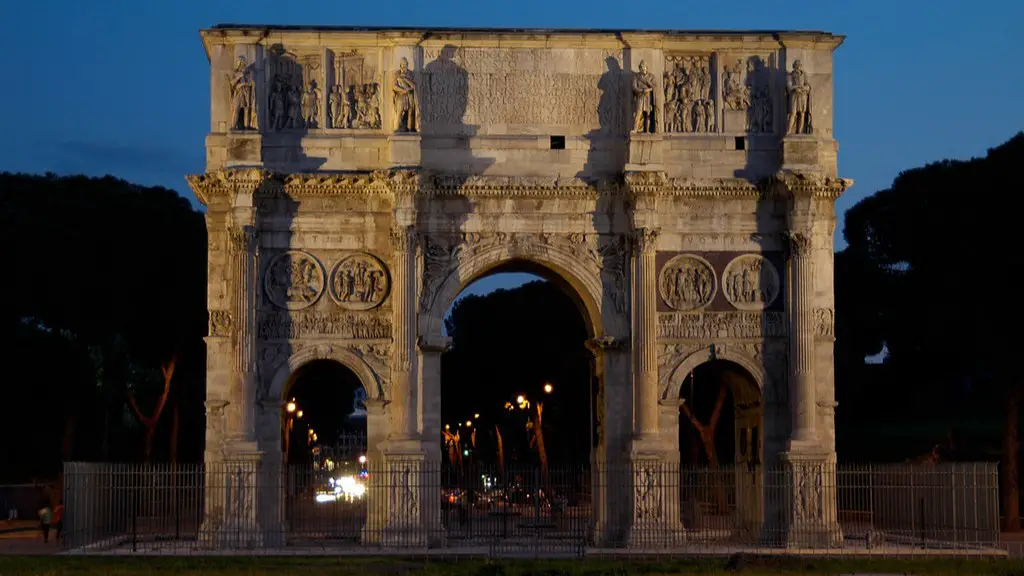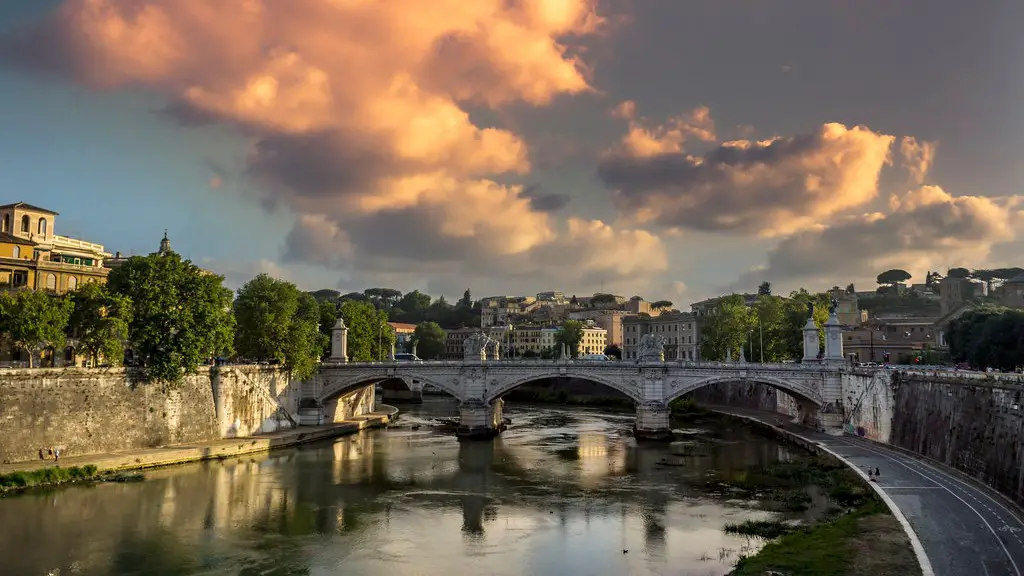The Form of Government in Ancient Rome
Rome has historically been a powerful influence in the Western world, particularly in regards to politics and government. In its earliest days, Rome had a monarchy, followed by a period of rule by the five members of the patrician class. Over time, the Roman Republic emerged and its form of government has been studied and admired by governments worldwide ever since.
When the Roman Republic was born in 509 BC, two consuls were elected annually. According to the Livy, the governor of Rome at the time had resigned his power to a magistrate, who was then chosen by the senators. From this point, the Roman Republic began to take shape.
The two consuls were elected from the patrician class and had different roles to fulfill. One consul was in charge of the civil law, and the other was responsible for military affairs. They were also responsible for proposing and enacting laws to be passed by either the Assembly or Senate.
The Assembly was composed of all the classes of society and took on the role of deciding whether or not to create a new law. The Senate was composed only of higher-class citizens and had the power to make the final decisions in regards to the laws.
Rome was eventually conquered by the Roman Empire and the Republic fell in 27 BC. The type of government changed drastically. The Republic was replaced with an autocratic government and the emperor was the sole ruler. All of the government roles and responsibilities were bestowed upon him.
The emperor had absolute power and could pass laws as he wish. He also had the power to appoint and remove magistrates and senators. The Senate continued to exist and held advisory role to the emperor.
Political Structure of Ancient Rome
Rome was divided into political divisions that had the responsibility of managing local affairs. This system was established on a hierarchical scale, and each level of government had more authority than the levels below it. These divisions included the local government, the provincial government and the imperial government.
At the bottom of this political hierarchy was the local government. This was the most basic form of government and was responsible for managing the affairs of local citizens. This was the level at which people interacted with the government most directly.
The provincial government was responsible for the administration of affairs within each political division. Each province had its own government composed of bureaucrats and governors. These governors were appointed by the Emperor, and they had the power to pass laws and manage the affairs of the citizens in their jurisdiction.
The imperial government was in charge of the entire empire. The emperor was responsible for the overall wellbeing of the empire, and he had the power to pass all laws. He could also appoint and dismiss governors and administrators in the provinces.
Legislative System of Ancient Rome
The Roman legislative system was composed of three branches: the Senate, the Popular Assembly, and the Emperor. Each branch had different roles to fulfill and held different levels of power.
The Senate was composed only of the wealthiest and highest-ranking citizens of Rome and had the most power in the government. The Senate was responsible for proposing laws to be passed by the Assembly, and they could also enact laws themselves.
The Popular Assembly was composed of representatives from all classes of society. This assembly was responsible for debating and voting on the laws proposed by the Senate. However, the Emperor had the power to veto any of the laws proposed by the Assembly.
The Roman Emperor had the power to pass any laws he wished. He also had the power to veto any of the laws proposed by the Senate and the Assembly.
Legal System of Ancient Rome
The Roman legal system hinged upon a three-tiered structure of government. This structure was composed of the local government, the provincial government, and the imperial government.
The local government handled matters of a local nature. These governments had their own set of laws, which they were responsible for enforcing. They also had their own magistrates and courts of justice. These governments could prosecute and punish those who violated the local laws.
The provincial government consisted of a governor and a small cadre of bureaucrats. This government enforced the laws of the province, as well as administering justice in criminal and civil cases. They had the power to punish those who violated provincial laws.
The imperial government had the power to pass and enforce the laws of the empire. The Emperor had the power to appoint and remove magistrates and governors in the provinces, as well as enact laws for the citizens of Rome. This government also held a great deal of influence over the Senate and the Popular Assembly.
Economy of Ancient Rome
The economy of Ancient Rome was based largely on agriculture, but it also included small-scale manufacture and large-scale trade. This economy was managed by the Roman government and included the regulation of prices, currency, and tariffs.
Rome was home to a vast agricultural industry, which produced a variety of goods for export and for trade. This agriculture was regulated by the government in order to ensure a plentiful supply for the citizens of Rome.
Small-scale manufacturing was also a part of the Roman economy. Small workshops produced items such as pottery and weapons, which were sold to the citizens of Rome.
The Roman government also regulated trade, as well as the prices of goods and services. The government imposed tariffs on imported goods, as well as taxes on goods sold within the empire. This regulation allowed the Roman economy to remain stable.
Currency of Ancient Rome
The currency of Ancient Rome was based upon a combination of coins and barter. Coins were the most common form of currency in Roman society, and this currency was regulated by the government.
The coins used in Rome had various values. The most common was the Denarius, which was equal to one day’s wages for a laborer. There were also smaller coins like the Sestertius, which was equal to one-fourth of a Denarius.
Barter was also used as a form of currency. People would often trade goods and services in order to acquire what they needed. This barter system was regulated by the government, and taxes were often levied on these goods and services.
Tax System of Ancient Rome
The tax system of Ancient Rome was based on the wealth of citizens. The wealthier citizens of Rome were subject to higher taxes, while poorer citizens were only taxed a nominal amount. This system allowed the Roman government to raise the necessary funds to maintain its operations.
The most common type of tax was the poll tax. This was a tax levied on all citizens, regardless of their wealth. The Roman government also imposed taxes on goods imported into and exported out of the empire.
Rome also had a property tax, which was based on the value of an individual’s property. This tax was in place to discourage citizens from acquiring too much wealth and to help keep the wealth within Rome.
The Roman government also imposed a sales tax. This was a tax that was levied on goods and services sold within the empire. This tax was used to finance the government’s operations.
Political Impact of Ancient Rome
The political system of Ancient Rome has had a lasting impact on the political systems of today. The three-tiered system of government, which was composed of the local, provincial, and imperial governments, has been adopted by many countries around the world.
The Roman legal system has also been adopted in many countries. The use of senators and popular assemblies in order to pass laws has been adopted by many governments worldwide.
The Roman economy also had an effect on other economies around the world. The Roman government had regulations in place to ensure a stable economy. This included the regulations of prices, currency, and taxes. This system of regulating the economy has been adopted by many countries as a way to promote economic stability.
The political, legal, and economic systems of Ancient Rome have had a profound effect on the way governments operate today. The Roman system of government was an example of a well-functioning system that has been adopted and adapted by many countries.

